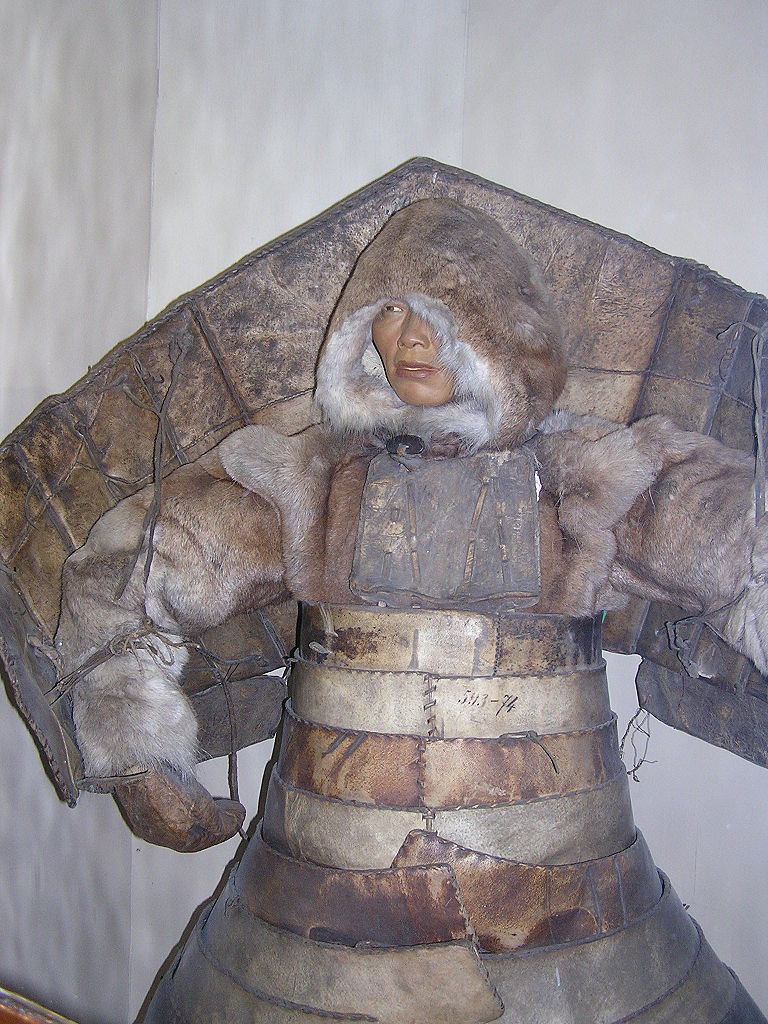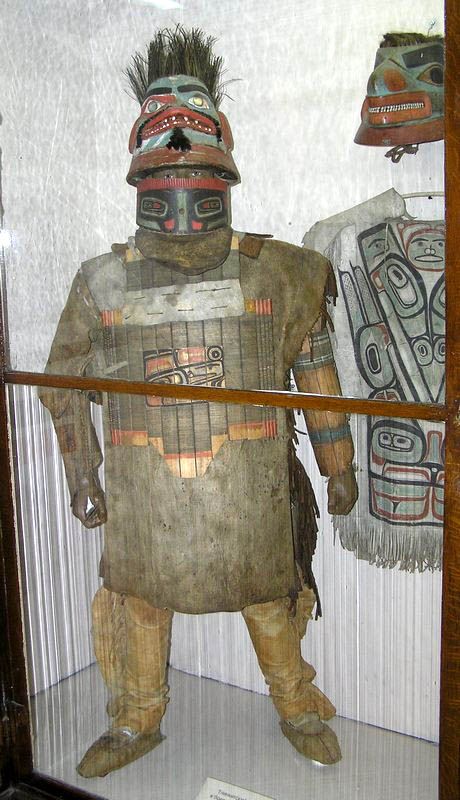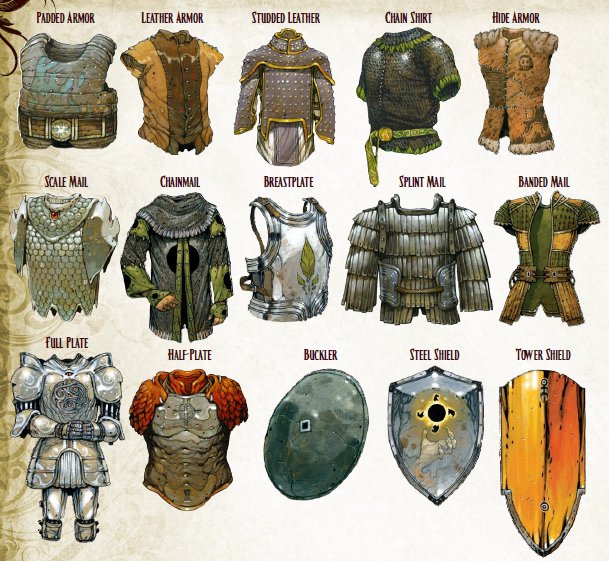|
|
Post by mumbles on Dec 13, 2019 8:05:39 GMT
I have seen conflicting info online.
I see many articles or postings online decrying the use of leather armor in medieval themed fantasy games or fantasy fiction and state that not only is there no evidence that leather armor was actually in vogue anywhere at anytime, but I also see some voices of dissent state that leather armor was real, albeit rarer than fantasy fiction would have you believe.
I have seen some argue for use of boiled leather as armor, and there also seems to be a fairly sizable camp of living historians who believe that the Greek linothorax armor was actually leather and not linen.
Where does the truth lie?
|
|
AndiTheBarvarian
Member
"Lord of the Memes"
Bavarianbarbarian - Semper Semprini
Posts: 10,325
Member is Online
|
Post by AndiTheBarvarian on Dec 13, 2019 9:06:24 GMT
|
|
|
|
Post by Timo Nieminen on Dec 13, 2019 10:19:36 GMT
Movie "biker" style leather armour wasn't a thing. Rawhide armour was pretty common. In Eurasia, rawhide lamellar, rawhide scale, rawhide helmets. Beyond the usual lamellar/scale, there were things like   Outside Eurasia,   (Respectively, crocodile hide armour from Africa, and elk hide from NW Pacific coast of America (with a wooden breastplate on top of it).) Strictly speaking, leather armour is less common. The most common leather armour was the buff coat:  The distinction between leather and rawhide is that leather has been tanned and rawhide hasn't. Tanning weakens it, so leather armour is usually less protective than rawhide armour. Some armour used half-tanned hides - leather on the outside (allowing oil/grease to penetrate to protect it from sweat and the weather) and rawhide on the inside (for strength). There is a nice thesis out there presenting tests of leather and rawhide: Edward Cheshire, Non-metallic armour prior to the First World War, PhD thesis, The University of Reading, 2010: ethos.bl.uk/OrderDetails.do?uin=uk.bl.ethos.529983Cheshire's conclusion is that leather is bad, and boiled rawhide is good. Therefore, he writes, cuir bouilli = boiled rawhide. (And not boiled leather, which is much worse.) Cheshire's analysis is wrong. Specifically, Cheshire's merit index is wrong. To repeat myself from a post on myarmoury: Cheshire briefly discusses his merit index in Appendix H (see pg 561, in V2). His merit index is the ratio (penetration depth)/(areal density). Less penetration is obviously a Good Thing, so a low merit index is good. But he divides by areal density, which means that heavier armours with the same penetration depth have a lower (and therefore better) merit index. Thus, he concludes that boiled rawhide is the best unfaced hide armour. However, it's clear from Fig 9:12 (pg 264, V1) that boiled rawhide is worse than plain rawhide - where he tests samples with the same density, plain rawhide performs better (the 3 left-hand yellow triangles (plain rawhide) all have an approximately density-matched blue diamond (boiled rawhide) lying above them (i.e., the boiled rawhide suffers greater penetration). There's a big cluster of boiled rawhide data with similar penetration to the plain rawhide, to the right on the graph - same penetration, but higher areal density. The same protection is achieved at the cost of greater weight. Cheshire's merit index rates boiled rawhide as twice as good as plain rawhide (half the merit index), but Fig 9:12 contradicts this. His merit index can be fixed: take the product (i.e., (penetration depth) times (areal density)), not the ratio. Since he gives the data in Appendix H, you can do this easily enough. Doing this, plain rawhide is about 20% better than boiled. Which casts serious doubt on his conclusion. Cuir bouilli is more probably rawhide that's been softened in hot water and shaped. |
|
|
|
Post by Vincent Dolan on Dec 13, 2019 14:25:25 GMT
The distinction between leather and rawhide is that leather has been tanned and rawhide hasn't. Tanning weakens it, so leather armour is usually less protective than rawhide armour. Neat. I'd always wondered about the difference between the two. I mean, I figured rawhide was untreated, hence the name, but it's always nice to have confirmation. Interesting about tanning weakening leather; is there any reason why it does so? I'm wholly unfamiliar with the tanning process. |
|
Deleted
Deleted Member
Posts: 0
|
Post by Deleted on Dec 13, 2019 14:38:21 GMT
He is correct, very early armor was made from leather or similar soft materials for people all over the world. If your talking later (like 13th century) the only leather armor that is technically armor was vambraces for archers.
|
|
|
|
Post by Timo Nieminen on Dec 13, 2019 15:02:55 GMT
The distinction between leather and rawhide is that leather has been tanned and rawhide hasn't. Tanning weakens it, so leather armour is usually less protective than rawhide armour. Neat. I'd always wondered about the difference between the two. I mean, I figured rawhide was untreated, hence the name, but it's always nice to have confirmation. Interesting about tanning weakening leather; is there any reason why it does so? I'm wholly unfamiliar with the tanning process. The tanning process removes stuff - leather is porous (which is why you can oil/wax it, and the oil/wax penetrates). The good news is that (a) it removes stuff that will rot and go stinky if it gets wet, and (b) it makes the leather softer. Rawhide is stiff, leather is much softer. If you want to make armour from it, you don't want stuff removed from it. You don't want it to be soft and porous. You want hard and rigid. You can soften rawhide, by mechanically breaking the collagen fibres in it. One traditional method was to chew it. If you don't want to do that, you wet it to make it flexible, and then you work it as it slowly dries, which breaks the fibres and their networks. If you want good armour, you don't want to do this. If you want clothing, you must do it. Softened rawhide should be more protective than leather (but heavier, and will rot if it gets wet). |
|
|
|
Post by Gunnar Wolfgard on Dec 13, 2019 16:45:22 GMT
Why do people refer to the movie leather armor as " biker style ". Been riding fifty plus years and have never seen any bikers wearing that stuff. This is the most common " biker style " leather I've seen.  |
|
|
|
Post by mumbles on Dec 13, 2019 23:05:28 GMT
Fascinating stuff.
Are there any images of what a Cuir bouilli cuirass would look like?
|
|
|
|
Post by Timo Nieminen on Dec 14, 2019 7:18:32 GMT
Why do people refer to the movie leather armor as " biker style " Because it's soft and jacket-style:   AFAICT, this stereotypical idea comes from old-school RPGs.  |
|
|
|
Post by Timo Nieminen on Dec 14, 2019 7:23:05 GMT
Are there any images of what a Cuir bouilli cuirass would look like? This is plausible:  It would have a similar shape to an iron/steel cuirass. |
|
|
|
Post by Gunnar Wolfgard on Dec 14, 2019 13:15:04 GMT
|
|
AndiTheBarvarian
Member
"Lord of the Memes"
Bavarianbarbarian - Semper Semprini
Posts: 10,325
Member is Online
|
Post by AndiTheBarvarian on Dec 14, 2019 13:37:19 GMT
|
|
|
|
Post by susieqz on Dec 16, 2019 5:07:34 GMT
not sure about rawhide.
gramppa made shoe soles from some kinda leather in layers,.
no synthetics.
these were hard as can be.
i doubt a sword could get thru these.
add a few extra layers n a spear wouldn't get thru either.
|
|
|
|
Post by Cosmoline on Dec 16, 2019 17:41:39 GMT
Rawhide, in my own experience, is something akin to plastic. It can be soaked to make it flexible, then it will dry and shrink to allow for a tight fit. Once covered with a sealant, it becomes reasonably water-resistant. In this form, it can be molded like a plastic and used in the same way. Swords will cut into it, as will arrows, but it slows down the cut and dissipates the force a bit. Combined with wood it can be quite effective, but it's poor protection on its own. Certainly against late medieval weapons and projectiles.
Treated leather falls into different categories. In addition to tanned clothing leather, you can also boil it in wax or just let it soak in warm wax. The former is very hard but also brittle. The latter is still a little bit flexible but resists cuts very well, esp. in layers. The problem is it gets very bulky very quickly. Plus, leather was pricey until the modern era. A buff coat was not cheap!
|
|
|
|
Post by Timo Nieminen on Dec 16, 2019 21:40:39 GMT
Rawhide [...] but it's poor protection on its own. Certainly against late medieval weapons and projectiles. This just means it's too thin. Use thicker hide, or multiple layers. 1 layer of silk provides little protection; 30 layers is different. 0.2mm of iron provides little protection; 2mm of iron is different. For Japanese lamellar armour, the minimum thickness for lamellae was about 3mm. These overlapped side-by-side to present 2 thicknesses on each row, and the up-down overlap often gave 4 thicknesses. Lots of different things can be made into "effective" armour if thick enough. The problem is whether or not it gets too heavy. So the weight needed to achieve effective thickness matters. Cheshire's thesis (cited upthread) suggests that rawhide is about twice as good as leather, i.e., we might need twice the weight of leather to get the same protection. (Leather boiled in water is worse, needing perhaps twice the weight again.) Some historical examples of multilayed rawhide armour, from Damascus, c. 1300: A helmet:  Side view of a torso armour splint:  The whole thing:  Examples from David Nicolle, "Leather armour in the Islamic world: a classic problem", orient.spbu.ru/books/tahiyyat/index.html#89 |
|
Zen_Hydra
Moderator
Born with a heart full of neutrality
Posts: 2,659 
|
Post by Zen_Hydra on Dec 16, 2019 22:31:00 GMT
Considering how durable and effective a viking style shield was, with its relatively thin wood laminated with rawhide, I'm surprised that combination wasn't turned into plates which could be strung together or sewn into a backing garment for relatively light and inexpensive armor.
Edit: After I finish my current shield project, I might have to put this idea to the test. I have an old wool peacoat that's looking kind of shabby, but it might make a good backing for some rawhide/boxwood laminate plates.
|
|
christain
Member
It's the steel on the inside that counts.
Posts: 2,835
|
Post by christain on Dec 16, 2019 23:38:33 GMT
Considering how durable and effective a viking style shield was, with its relatively thin wood laminated with rawhide, I'm surprised that combination wasn't turned into plates which could be strung together or sewn into a backing garment for relatively light and inexpensive armor. Edit: After I finish my current shield project, I might have to put this idea to the test. I have an old wool peacoat that's looking kind of shabby, but it might make a good backing for some rawhide/boxwood laminate plates. I've had the EXACT SAME idea. You can get big rawhide dog chew-bones cheap. The really big ones roll out to almost enough to cover a full size Viking shield. Tough stuff when it dries.  |
|
|
|
Post by Cosmoline on Dec 17, 2019 1:07:08 GMT
Cost is a potential factor, at least for western Europe. The sense I've gotten is that demands on the supply of hides exceeded supply for a long time. Everything from parchment and vellum to fur lining. And as noted, effective hide armor would take many layers thus adding to the cost over linen which can simply be grown in the field.
|
|
|
|
Post by yahayaluqman on Nov 1, 2023 11:20:42 GMT
While leather armor may not have been the dominant choice, it certainly existed and served its purpose in different cultures and periods.
|
|
|
|
Post by softbunny on Nov 1, 2023 11:32:32 GMT
The thread is from four years ago, but the question about the historical accuracy of leather armor remains a topic of interest. While it may not have been as common as portrayed in fantasy fiction, leather armor did have its place in history, especially in the form of boiled leather or cuir bouilli.The thread is from four years ago, but the question about the historical accuracy of leather armor remains a topic of interest. While it may not have been as common as portrayed in fantasy fiction, leather armor did have its place in history, especially in the form of boiled leather or cuir bouilli. If you're curious about how leather develops character and patina over time, you can explore this article on leather patina at vonbaer.com. It provides insights into the fascinating transformation of leather over the years. History often holds hidden gems, and leather armor's role is one of those intriguing aspects worth exploring. |
|

